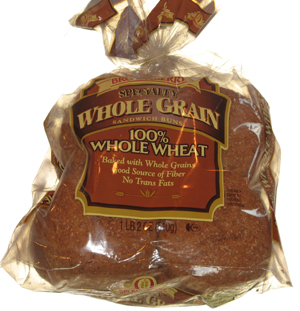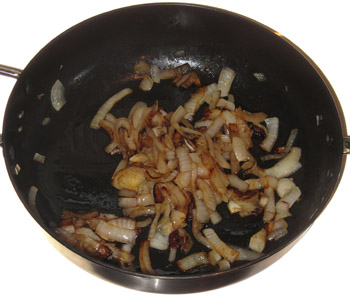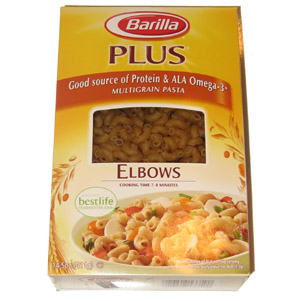 No, I did not mistype the title of this post. I am going to tell you how to make a healthy cheeseburger (or hamburger, if you’re a weirdo who doesn’t like cheese).
No, I did not mistype the title of this post. I am going to tell you how to make a healthy cheeseburger (or hamburger, if you’re a weirdo who doesn’t like cheese).
Most burgers will receive the bulk of their calories from two locations, the bun, and the meat. First let us focus on the meat.
Ground beef comes with varying degrees of fat content depending on which part of the animal it is from. It is usually noted on the package with a fraction such as 87/13 (13% fat) or 95/5 (5% fat). More fat, more juice, more calories, a lot more calories. You can get a difference of a few hundred calories, per burger, between the leanest ground beef and the fattest. The leanest you’ll find is usually ground sirloin, with the 5% fat, the worst is plain ground hamburger, which is made from scrap rather than any specific cut of meat, and has a really high fat content.
Of course, the best option, is to not use ground beef at all, use buffalo.
I’m proud to say I’ve entirely given up ground beef. I don’t need it, buffalo is better tasting and better for you. American Buffalo or Bison are the same critter and were a key component of the Native American diet until the white man came, then there were hunted almost to extinction but have since made a great recovery, there are now herds free roaming and many ranchers raise them for meat.
Unlike cows buffalo have not been domesticated for thousands of years, this has given them more natural evolution and so they’re healthier animals. It is (apparently) illegal in the US to give buffalo hormones or antibiotics, unlike domestic cows which get such injections all the time. So buffalo are, by law, organic. Additionally buffalo have no problem putting on weight so they aren’t force fed super grain or anything like that, they just graze on grass like they always have. Buffalo also don’t get ecoli like cows do.
The thing about buffalo though, is the meat is extremely healthy. It has less cholesterol or fat than skinless chicken breasts, and even some types of fish. You’ll notice this when cooking it, you’re probably used to watching your burgers shrink on the grill as the fat runs out, buffalo burgers do not shrink when cooked because they are lean.
I still use beef for steaks, because I can’t find a local source of buffalo so I have to order it online and it comes frozen and frozen ground meat isn’t a big deal, but I’d prefer fresh and not frozen steaks. Plus, with steaks, I can more easily limit my calories by only ordering leaner loin cuts.
Anyways, I have most recently ordered ground bison from Buffalo Gal, they had a 60 pound deal where the price per pound, even including shipping, was close to ground beef. I have a big freezer in the basement, so I bought it. According to them they use extra lean ground bison and their calories per pound are 600 calories, 11.2 grams fat, 96 grams protein. So, using their bison, a 1/4 pound burger will get you 150 calories, 2.8 grams fat, 24 grams protein. Not bad for starts.
Then there is the bun, a bunless burger would be best, but this post is about making a true cheeseburger and so we need the bun. I recommend a healthy protein infused multigrain bun like my favorite buns. These have only 170 calories per bun, give you 10 grams of protein and 5 grams of fiber, thats great for a bread product.
So, here is the recipe.
Assuming you start with a 1 pound package of ground buffalo, decide on how many burgers you want. For health reasons I recommend eating no more than 1 burger per meal. But in anycase if you want to make 4 burgers use the whole package, 2 burgers cut it in half. Or, one thing I do is always plan on making 4 burgers but refridgerate two of the patties to make them to the next day. I don’t mind having them two days in a row, but it does kind of annoy my wife.
So, here is how to make the burgers:
Step 1, start carmelizing onions, this can take 30 minutes or more and will give you time to do the rest.
Disclaimer, I never measure any of the seasonings, I eyeball them, so consider these estimates. I urge you to experiment yourself.
Assuming you’re using half a package (half a pound, 2 burgers) do the following.
Place the meat in a large mixing bowl, I like the big stainless steel bowls.
Add 1 tablespoon of dried oregano.
Add 1 tablespoon of Worcestershire sauce.
Add 2 minced garlic cloves, or 1-2 teaspoons of pre-minced garlic (what I do).
Add 2 tablespoons of very finly minced onion, or just 1 tablespoon of onion powder if you’re feeling lazy.
Add 2 tablespoons of egg whites, better Egg Beaters (if you have them).
Add 1 tablespoon of breadcrumbs.
Sprinkle with salt to your preference (Start with just a teaspoon).
Mix all that up hardcore.
This blog isn’t meant to just be recipes, it is meant to teach you how to cook, so what are all those ingredients for? Well the oregano and garlic are mostly just for seasoning. The Worcestershire sauce seasons as well, but it also adds salt, the salt is also just for salt. The onion adds flavor, but also liquid keeping the burger moist as it cooks (leaner meats can otherwise be dry). Onion powder doesn’t add moisture so it isn’t a perfect substitution. The egg whites or Egg Beaters are meant to help the burger hold together while cooking, and the breadcrumbs will absorb moisture so also help make the burger more moist.
Once that is mixed up well form your patties, you can use burger forming gadgets, or do it by hand with spatulas and make square ones. I like to find a large glass the same diameter as the buns I will be using and flatten the meat out and then cut it out using the glass. However this works best when making 4 patties as then the 4th is always the left over bits I have to form by hand, with just 2 or 1 you couldn’t do it this way.
Now, get yourself some pineapple out. If you have a whole pineapple, check out this video on how to cut one up, stop at the point though where he’s got it into long hot-dog-bun sized chunks, at that point he cuts the core off the inside, and then I would go further and cut ones right down the middle the long way to make skinny 1/8th of the pineapple strips. Plan on atleast 1 of these strips per person. You can put them on kabobs too if you want.
Now, we cook!
If you’re using a grill preheat it and lub it up with a spray or with a little papertowel dabbed in oil, if you’re using a broiler in your over turn it on high and arrange a rack 6-8 inches below it (second highest level usually).
On the grill place the burgers on the bottom rack and place the pineapple slices on the rack directly above. If you only have 1 rack put the slices off to the side as far from the heat as possible but still on the grill. Then, if you have a third top rack put your buns face down on that top rack, if not, run your buns through your toaster. Close your lid and give it 5-10 minutes on medium high. You know how your grill works better than I do though. Flip the burgers once the bottoms have nice brown grill marks, and do the other side. Flip the pineapple once too.
Right before the burgers are done you need to load them up with the onions, put the carmelized onions directly on the burger, then add the cheese. I like sharp (aged) cheddar for this, slices not shredded. White or yellow it doesn’t matter, just that it is nicely aged. You could use fat free cheese here and save half the calories from it, but cheese is my guilty pleasure, I eat healthy elsewhere just so I can eat real cheese. Kill the heat, close the lid or put the broiler pan back in the over, and let the residual heat melt the cheese. We put the onions on first, then the cheese, so that the cheese holds the onions in place, otherwise they’d slip out all over.
Load yourself up with ketchup, and you’re good to go. Healthy buffalo burgers with grilled pineapple. Maybe have a salad too or something. So how do the calories add up?
Meat: 150 calories.
Stuff we added to the meat (Garlic, onions, sauce, egg beaters) lets estimate at 50 calories.
Bun: 170 calories:
Cheese: 90 calories is typical for 1 slice of good cheddar.
Onions: Almost impossible to count, probably 1/4 of a cooked onion, but there is some oil we cooked them in. I’d estimate on the high side and say 50 calories max.
Grilled Pineapple: Well, an entire pineapple has just 227 calories, we’re eating 1/8th of one per person, so that gives us ~29 calories. Heck, treat yourself, have 2 pieces heh.
So, in total, you’ve got 460 calories in the burger, around 40 grams of protein, maybe 8ish grams of fiber. With very little in the way of simple sugars it could keep you full for longer as well. Then the pineapple side only adds 29-58 calories depending on if you have 1 slice or two. You could go and get yourself an ice cream sandwich and still end up with less than 1000 calories in the whole meal. Of course my wife rarely finishes her burger so I usually end up eating 1.3 burgers bumping my total up a little bit.
 Mmmm, man food, meat and potatoes. And yet this is a nutritional food blog, so can I still do man food? I know can do healthy meat (but that is another post) but can I do healthy potatoes?
Mmmm, man food, meat and potatoes. And yet this is a nutritional food blog, so can I still do man food? I know can do healthy meat (but that is another post) but can I do healthy potatoes? No, this post isn’t about what
No, this post isn’t about what  Onions, like some other vegetables such as carrots, have a lot of sugar in them. This isn’t to mean they’re sweet like a candy bar, it isn’t the same type of sugar. These are complex sugars.
Onions, like some other vegetables such as carrots, have a lot of sugar in them. This isn’t to mean they’re sweet like a candy bar, it isn’t the same type of sugar. These are complex sugars. Pasta doesn’t need to be unhealthy. As I say in my
Pasta doesn’t need to be unhealthy. As I say in my
Recent Comments